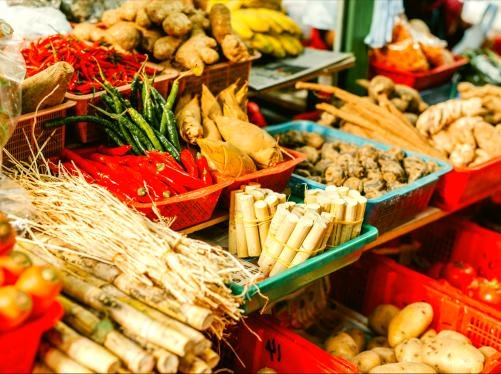Compendium of Materia Medica also states: “Sugarcane is sweet, mild, astringent, and non-toxic. Anything sweet has a tonic effect, either tonifying the spleen or replenishing qi.” The biggest difference between sugarcane and other fruits is that the riper it becomes, the harder its skin becomes, making it less susceptible to pests and diseases, and therefore less likely to have pesticide residues.
Concentrated sugarcane juice crystals: brown sugar and red sugar
Sugarcane contains nutrients such as sucrose, polysaccharides, carbohydrates, amino acids, vitamins B1, B2, B6, C, calcium, phosphorus, and iron. Its iron content is even higher than many fruits, earning it the nickname “blood-tonifying fruit.” Many women also use brown sugar drinks to supplement their iron intake during menstruation or for daily beauty regimens.
From a Traditional Chinese Medicine perspective, brown sugar is a warming tonic, known for its benefits of invigorating qi, relieving gastrointestinal discomfort, and promoting blood circulation and dispersing blood stasis.
Brown sugar is made according to traditional methods by squeezing sugarcane juice, concentrating it, and cooling it to crystallize it. Nowadays, brown sugar and dark brown sugar are differentiated based on the ratio of sugarcane syrup in the recipe.
Dark brown sugar has a slightly lower ratio of sugarcane syrup. Both are unrefined, retaining a wealth of minerals and vitamins, resulting in a unique flavor and a light aroma.
Because it’s less sweet than white sugar, it can be used in beverages, as a herbal remedy in Traditional Chinese Medicine, and for baking.
Chewing sugarcane strengthens oral muscles and improves bad breath.
Everyone’s memory of sugarcane is likely to recall the sugarcane carts at the market, where vendors skillfully split stalks of sugarcane, then peel the purple husks and pack them into bags for sale. This is enough for a family to spend an entire weekend chewing sugarcane.
Chewing sugarcane is a great exercise for the teeth and oral muscles. It not only removes food debris and deposits from the mouth and between the teeth, but also strengthens the oral muscles, increasing the strength of the bite and facial muscles, and can also improve bad breath.
Heated sugarcane quenches thirst.
There are two common types of sugarcane: red sugarcane (also known as black sugarcane), typically eaten fresh, and green sugarcane (also known as white sugarcane), primarily used to make sugar, though it’s also now eaten fresh and used in soups. Different colors have different properties. Red sugarcane is warm and nourishing, and shouldn’t be used for sore throats and those with dry, hot throats. Green sugarcane is sweet and cooling, with a heat-clearing effect, relieving lung and stomach heat.
Heated sugarcane juice
Sugarcane juice can be enjoyed cold or heated, benefiting the spleen and stomach. It can also be added with lemon or milk. Sugarcane can also be roasted, making it sweeter and moisturizing the lungs and throat, promoting fluid production and quenching thirst, and relieving dryness.
Sugarcane must be juiced and concentrated within 24-48 hours of harvesting, otherwise it will ferment. It’s recommended to purchase freshly squeezed sugarcane juice. Any leftover sugarcane juice must be tightly capped and refrigerated. Refrigerate and thaw before consumption. Sugarcane juice ferments easily when exposed to room temperature. Avoid drinking sugarcane juice that becomes sour or tastes off.
As tastes diversify, sugarcane is increasingly used in a variety of dishes, such as sugarcane hot pot, sugarcane chicken soup, sugarcane coffee, sugarcane duck, and sugarcane chicken. It can replace sugar to enhance the sweetness and flavor of dishes. The bagasse left after juicing can also be recycled, such as into building materials like sugarcane boards, fertilizer, and dried energy fuel. It is a valuable plant with many diverse benefits for human life.


Leave a Reply